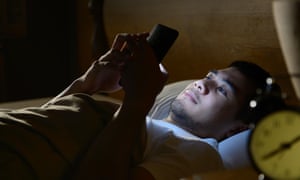02) AI Takeover
03) Tinder Data
04) Apple blocking ads that follow users around web is 'sabotage'
05) Glamour's business model changes
06) Twitter's New Addition
07) The White Privilege of the “Lone Wolf” Shooter
08) How Has Social Media Saved Socialism?
09) What kind of journalism should the BBC do and not do?
10) Harvey Weinstein Journalist on Channel 4
11) Great British Bake-off reaches young people
12) Journalist Mark Halperin Suspended
13) Kevin Spacey Scandal
14) Fox News shows broke UK TV impartiality rules, Ofcom finds
15) Channel 4 to take on Google & Facebook
16) Videos removed from YouTube in extremism clampdown
17) Paradise Papers leak reveals secrets of the world elite's hidden wealth
18) Amazon’s Alexa is now part of the family – I just hope she doesn’t replace me’
19) Prince Harry and Meghan Markle
20) YouTube investigates reports of child abuse terms in autofill searches
21) British MP calls on Twitter to release Russian 'troll factory' tweets
22) Thirty countries use 'armies of opinion shapers' to manipulate democracy
23) Poppy
24) Netflix must cut prices by more than half to compete with pirates
25) Rupert Murdoch's "Disney Deal"
26) BT and Sky deal
27) The risk of using Twitter as a news source
28) Net neutrality
29) Genuinely great things the internet gave us in 2017
30) Apple faces lawsuits over its intentional slowing of older iPhones
31) Kingsmill tweet
32) Is this the year 'weaponised' AI bots do battle?
33) Dangers of echo chambers
34) 1994 rape case that newspaper called a hoax, solved
35) The Guardian newspaper adopts tabloid format
36) Purves opinion on male BBC presenters
37)
38)
39)
40)
03) Tinder Data
04) Apple blocking ads that follow users around web is 'sabotage'
05) Glamour's business model changes
06) Twitter's New Addition
07) The White Privilege of the “Lone Wolf” Shooter
08) How Has Social Media Saved Socialism?
09) What kind of journalism should the BBC do and not do?
10) Harvey Weinstein Journalist on Channel 4
11) Great British Bake-off reaches young people
12) Journalist Mark Halperin Suspended
13) Kevin Spacey Scandal
14) Fox News shows broke UK TV impartiality rules, Ofcom finds
15) Channel 4 to take on Google & Facebook
16) Videos removed from YouTube in extremism clampdown
17) Paradise Papers leak reveals secrets of the world elite's hidden wealth
18) Amazon’s Alexa is now part of the family – I just hope she doesn’t replace me’
19) Prince Harry and Meghan Markle
20) YouTube investigates reports of child abuse terms in autofill searches
21) British MP calls on Twitter to release Russian 'troll factory' tweets
22) Thirty countries use 'armies of opinion shapers' to manipulate democracy
23) Poppy
24) Netflix must cut prices by more than half to compete with pirates
25) Rupert Murdoch's "Disney Deal"
26) BT and Sky deal
27) The risk of using Twitter as a news source
28) Net neutrality
29) Genuinely great things the internet gave us in 2017
30) Apple faces lawsuits over its intentional slowing of older iPhones
31) Kingsmill tweet
32) Is this the year 'weaponised' AI bots do battle?
33) Dangers of echo chambers
34) 1994 rape case that newspaper called a hoax, solved
35) The Guardian newspaper adopts tabloid format
36) Purves opinion on male BBC presenters
37)
38)
39)
40)

